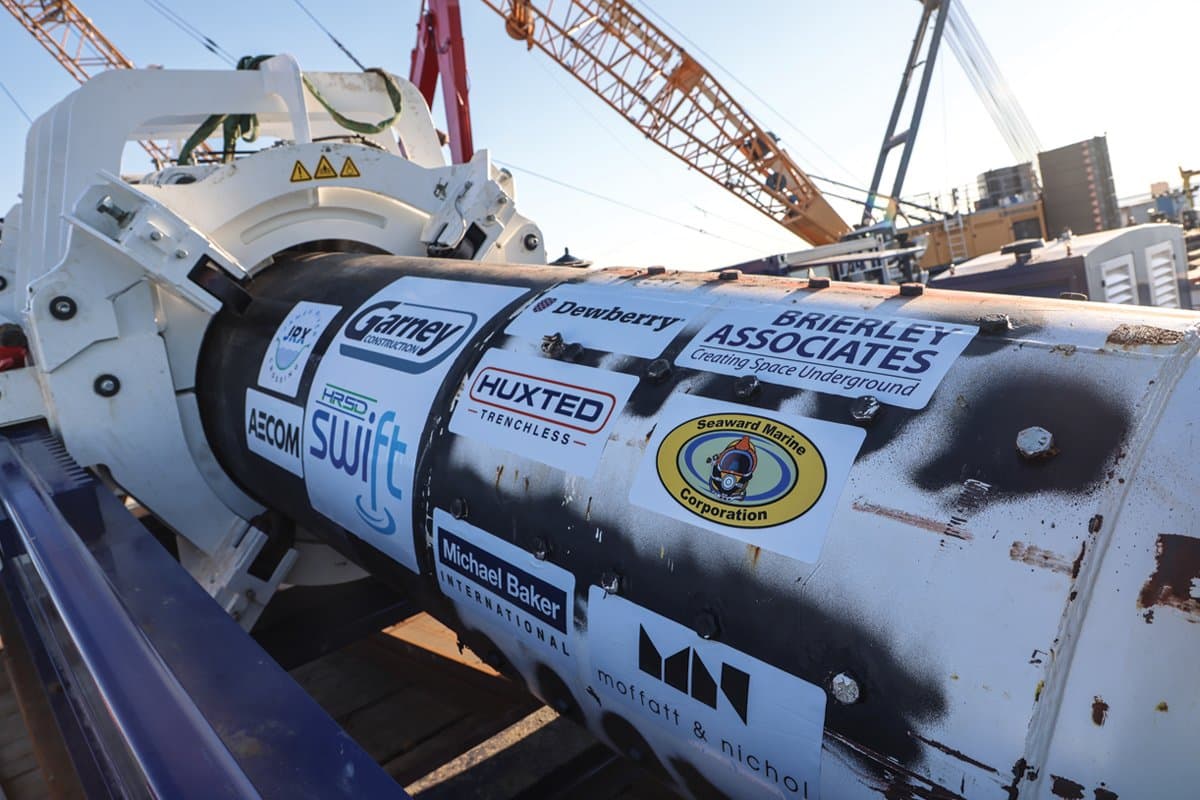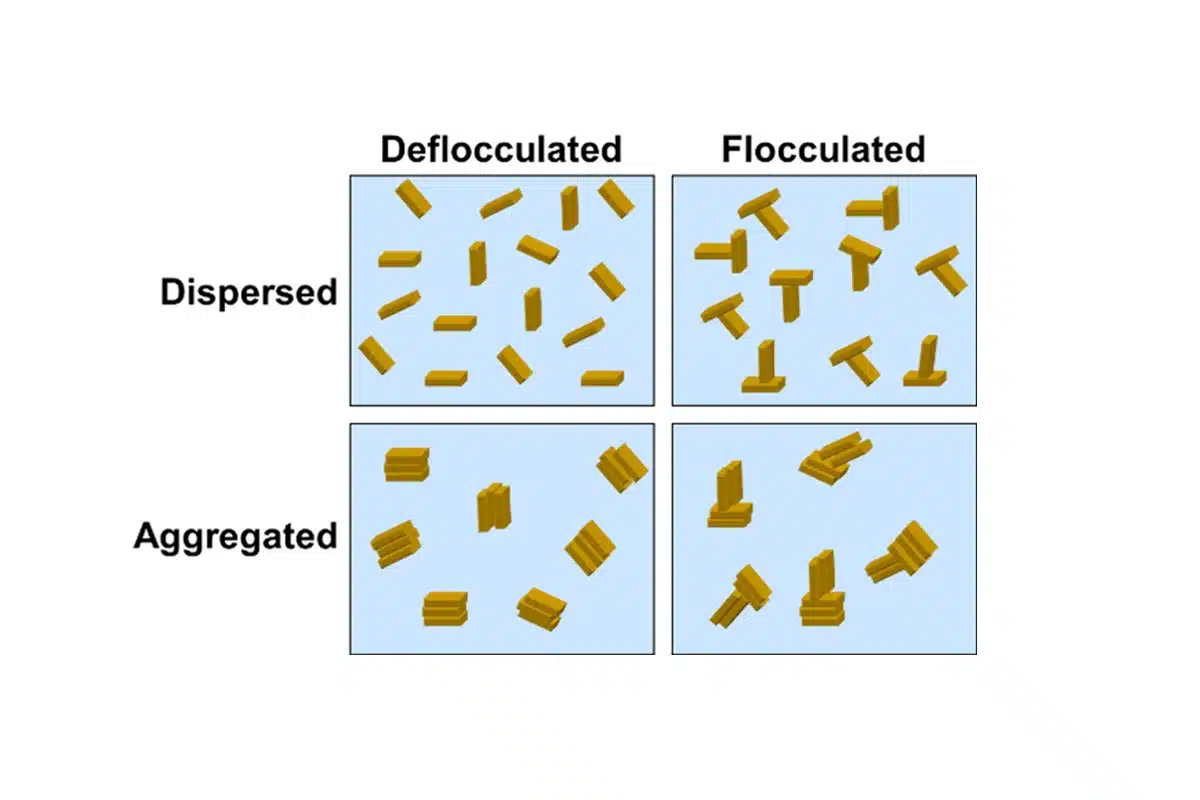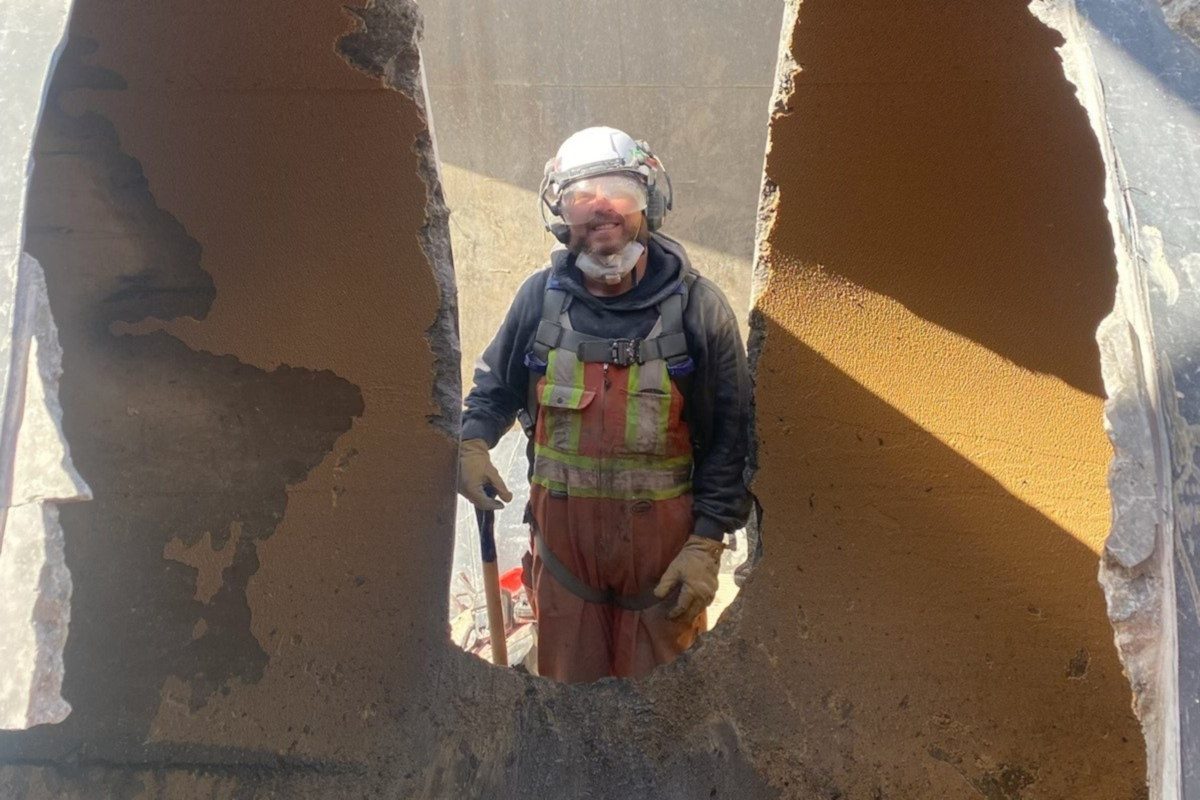
Laney Hits Record HDD Run on Houston Ship Channel Install
August 26, 2015
 Laney Directional Drilling tallied another record install and did so while handling a tricky curve. Using the intersect method on a 12-in. steel propane pipeline along the crowded ExxonMobil corridor, Laney completed an 11,653-ft installation under the Houston Ship Channel.
Laney Directional Drilling tallied another record install and did so while handling a tricky curve. Using the intersect method on a 12-in. steel propane pipeline along the crowded ExxonMobil corridor, Laney completed an 11,653-ft installation under the Houston Ship Channel.Although the horizontal directional drilling operation was a North American record for length using 12-in. pipe, according to CEO Kevin Fox, the bigger challenge was overcoming a 28-degree side bend in the middle of the intersect.
The project was completed in just 23 days by acquiring a rare waiver from ExxonMobil for permission drill 24 hours per day along the right of way, says project manager Kent Lawler. Laney began rig-up operations on Sept. 25, 2014, and completed product pullback on Oct. 17.
NuStar Energy LP contracted Laney as a prime contractor for the HDD operations alone, while WHC Energy Services was the prime contractor for the mainline work. This arrangement is becoming more common in complex HDD projects like this one, Fox says. Typically, HDD contractors are subcontracted by the mainline contractor to perform drilling work.
“When the challenges are as complex as projects like this, the trend used to be from the owners’ perspective to have the HDDs performed by a subcontractor who is subcontracted to the mainline contractor, who then assumes the risks of the subcontractor and charges some kind of premium for that risk,” Fox explains. “As these more complex projects come about, owners are moving to prime contracting for the drill, as was the case with this project. The mainline contractor had a separate prime contract for pipe work.”
Fox says there are potential challenges in terms of communication with this type of arrangement, as the owner must serve as the interface for the two prime contractors to work together in tandem. However, he adds that “All the projects I’ve seen done like this have been seamless, and no one is delaying the other company.”
Expanding Capacity in Texas
The project was part of NuStar’s efforts to reactivate a 200-mile, 12-in. pipeline between Mont Belvieu and Corpus Christi, Texas. In the first quarter of 2014, the San Antonio-based company signed a long-term agreement to allow Occidental Petroleum (Oxy) to ship natural gas liquids (NGLs) on the pipeline.
Throughout the last year, NuStar has been working to prepare the line for service, including reversing its flow and converting it from refined products service to NGL service. The pipeline has a capacity to move approximately 110,000 barrels per day (bpd).
Oxy will use a majority of the line’s capacity to transport NGLs via an interconnect with an Oxy pipeline to the Ingleside Energy Center export facility located in Ingleside, Texas, at the site of the former naval base purchased by the company in 2012.
NuStar has continued to market any remaining capacity on the pipeline, which is expected to generate approximately $23 million per year of incremental revenue (EBITDA).
“Our Mont Belvieu-to-Corpus Christi pipeline is one of the key pipelines in our South Texas system, and we are very pleased to have reached an agreement with Oxy to reactivate and utilize the line,” said NuStar president and CEO Brad Barron in a Feb. 5, 2014, statement. “The agreement will begin generating distributable cash flow for NuStar in April of this year [2014], and we look forward to exploring opportunities with Oxy and other companies to meet their NGL transportation needs.”
Laney’s portion of the project involved installing a section of pipeline through the ExxonMobil corridor, under the Houston Ship Channel and into port of Baytown. The only trouble was finding space underground for the pipe, according to Alan Snider, Senior Vice President – Project Management and Engineering. There were more than 15 pipelines in the area where Laney was working.
“Oh it was crazy crowded,” Snider says, referring to the challenges Laney faced in designing the project. The engineering team had to sort through the existing pipelines to come up with a design to allow the drilling crew enough footprint to set up equipment.
“Getting accurate as-built records on all the existing lines was a chore,” Snider adds. “We went through seven iterations of getting information and then revising the design as we found new or better as-builts. That’s what forced us into the 28-degree side bend.
“While it’s not the longest project we’ve ever done, it’s definitely the longest with that kind of geometry.”
Getting Bent
Laney has performed a number of challenging projects in its past. While none of the challenges — the length, the curve, the intersect — were particularly notable on their own, it was the combination of all three that led to the project being such a challenge.
With a drill this long, Fox says Laney had to use the intercept method, drilling from both sides and then “bump bits” to complete the pilot hole. However, the side bend limited the ability to push the drill pipe, increasing the push load.
Although the drilling operation itself was tricky, Lawler says the biggest obstacle was working in the “highly congested right of way.”
“It required substantial engineering work, as there is a lot of infrastructure eating up corridor space,” Lawler says. “Our engineers came up with a good route that involved a bend in the channel. ExxonMobil usually requires contractors to be off the right of way by 5 p.m., but we obtained a waiver to work 24 hours. They granted the request due to the magnitude of the project.”
Laney received permission to extend its drilling operations to work non-stop thanks to the company’s strong working relationship with ExxonMobil, Lawler says. Laney deployed two of its in-house 750,000-lb HDD rigs for the project, using both rigs during the pilot bore and one rig to pull the product pipe into place. The project involved drilling at a total depth of 160 ft and 90 ft below the Houston Ship Channel, through fat clay, lean clay and silty sand.
Employing a design-build approach, Laney got involved with the project early on, performing engineering work for NuStar on the crossing, conducting constructability reviews and performing geotechnical work to reduce the risk of hydraulic fracturing. The company also brought in a drilling mud engineer to ensure the integrity of the drilling hole.
“We planned for 24 hours a day drilling so that the drill pipe was always turning,” Lawler says. “If you let the hole sit too long while not working, the hole degrades over time. If you are continuously drilling, it’s better for the hole because it stays open and stays lubricated. And ultimately you’re reducing the torque on the drill string.”
Another challenge was with steering the pilot bore, Lawler says. Because of the heavy ship traffic, Laney was restricted in its use of coil wire for steering and had to rely on other methods, including magnetic locating and a gyroscope.
Pushing the Envelope
As environmental restrictions tighten, Fox says completing these ever more challenging projects helps the industry evolve.
“This technology has only been around since the early 1970s and only became widely used in late 1980s and early 1990s,” Fox says. “Even 10 years ago, the technology didn’t really exist to take on a project of this length. The old way was to complete two shorter drills with some sort of tie-in in the middle of bay. You would have to use a lay barge in the channel or bay. With environmental regulations ever increasing, we have to continue to push the envelope.”
As HDD projects get longer and longer, Fox says contractors like Laney have nearly eliminated the need to disrupt the body of water companies are working under. These newer methods are more environmentally friendly and more economical, as installing a pipeline in one shot like this project eliminates some of the construction costs associated with the earlier methods. Completing these challenging projects also sets precedent in the industry.
“As the industry evolves and crossings get longer, it demonstrates that we’ve done it before,” Fox adds. “Sometimes when an owner contemplates a project like this, it doesn’t want to be the guinea pig. We can show them that’s it’s already been done and make them more comfortable with the risk because they know we can execute the project in a safe manner.”
Fox believes that HDD crossings will continue to push the current boundaries.
“The technology exists today to go as long as 15,000 ft. It hasn’t been done yet, but I believe the technology already exists to do so,” Fox says, adding that smaller diameter pipe will likely be the first, but larger diameters will soon follow. “Sometime in the not too distant future, we’ll see larger diameter, 30 in. and above, installed at those lengths with the technology that exists right now.”
Bradley Kramer is managing editor of North American Oil & Gas Pipelines, a sister publication to Trenchless Technology.




